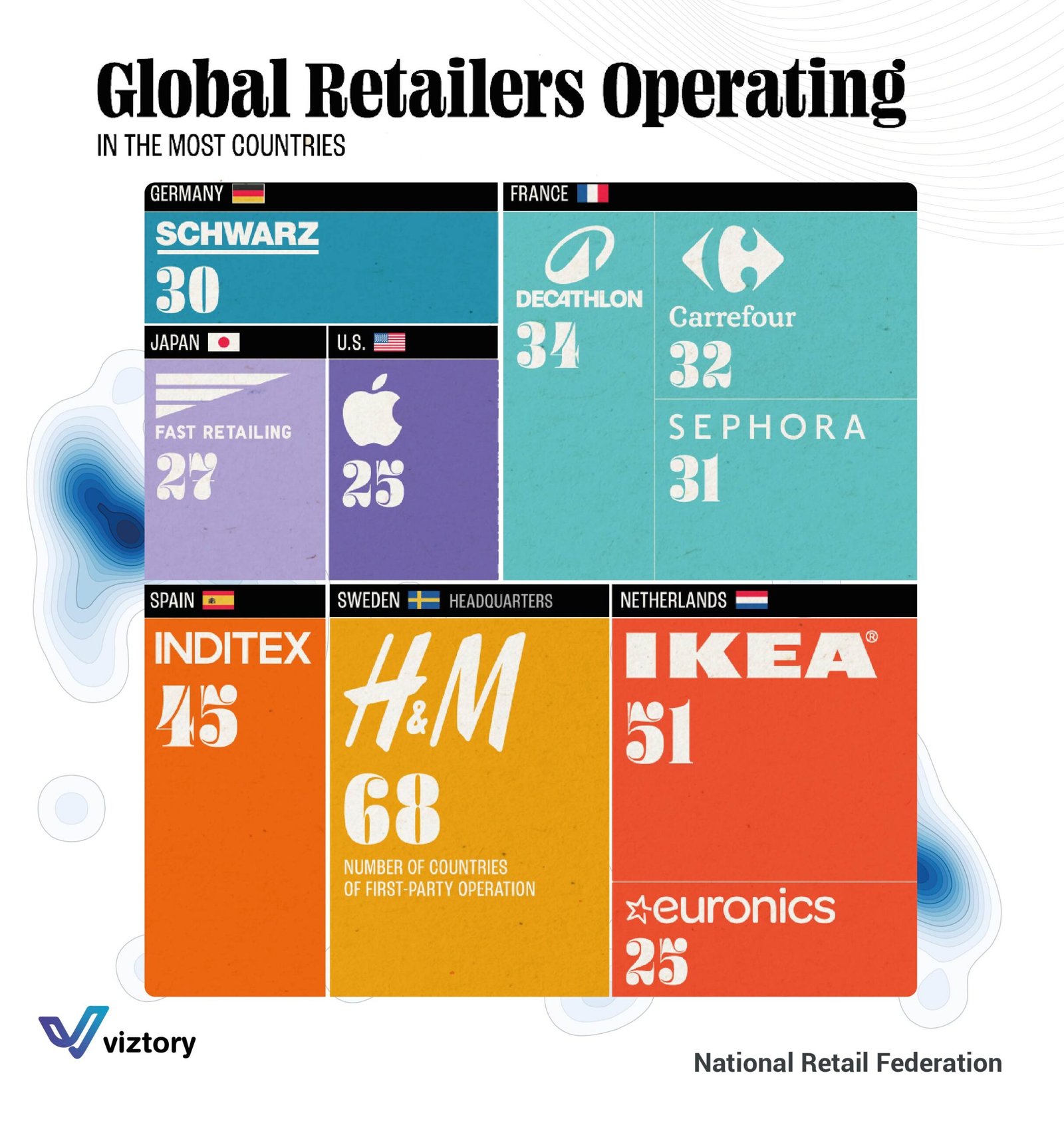The Impact of Global Retailers on the Market: Marketing Strategies and Global Expansion
-
Aug, Mon, 2024
The Impact of Global Retailers on the Market: Marketing Strategies and Global Expansion
In the modern marketing world, global retailers play a pivotal role in shaping international markets through their extensive reach and advanced strategies. The image, which displays the number of countries where major retailers like H&M, Inditex, and IKEA operate, highlights how these companies have become integral to the global economic system.
Visualization Analysis
The image provides a clear insight into the largest retailers operating in the most countries. Swedish company H&M leads with operations in 68 countries, followed by Spanish company Inditex (owner of brands like Zara) in 45 countries, and Dutch giant IKEA in 51 countries.
It’s evident that diverse marketing strategies are key to such expansive growth. These companies utilize innovative marketing approaches that align with the local cultures of each country in which they operate, contributing to their global success. For instance, H&M offers affordable products while focusing on sustainability and modern fashion trends, attracting a wide customer base across various countries.
Global Marketing Strategies
-
Local Adaptation: Many of these companies rely on local marketing strategies that reflect the culture and tastes of the region. For example, IKEA offers products tailored to the specific needs of local populations, including variations in furniture designs and sizes.
-
Digital Transformation: With technological advancements, e-commerce has become a core part of these companies’ marketing strategies. Major brands like Apple and H&M leverage their digital platforms to engage with customers and expand their global customer base.
-
Sustainability and Social Responsibility: With the growing emphasis on environmental concerns and sustainability, these issues have become a crucial part of marketing strategies. Companies like Decathlon and Sephora promote eco-friendly products and sustainable practices in their campaigns.
Future Challenges
Despite this widespread presence, these companies face significant challenges in global markets. Economic and political shifts can impact their ability to sustain growth. Additionally, they must navigate changes in consumer behavior and preferences.
Conclusion
The image perfectly reflects how innovative marketing strategies contribute to the global expansion of retailers. By focusing on local cultural adaptation, leveraging technology, and promoting sustainability, these companies have firmly established themselves as major players in the global economy. As they continue to innovate, they will remain at the forefront of global markets in the future.

